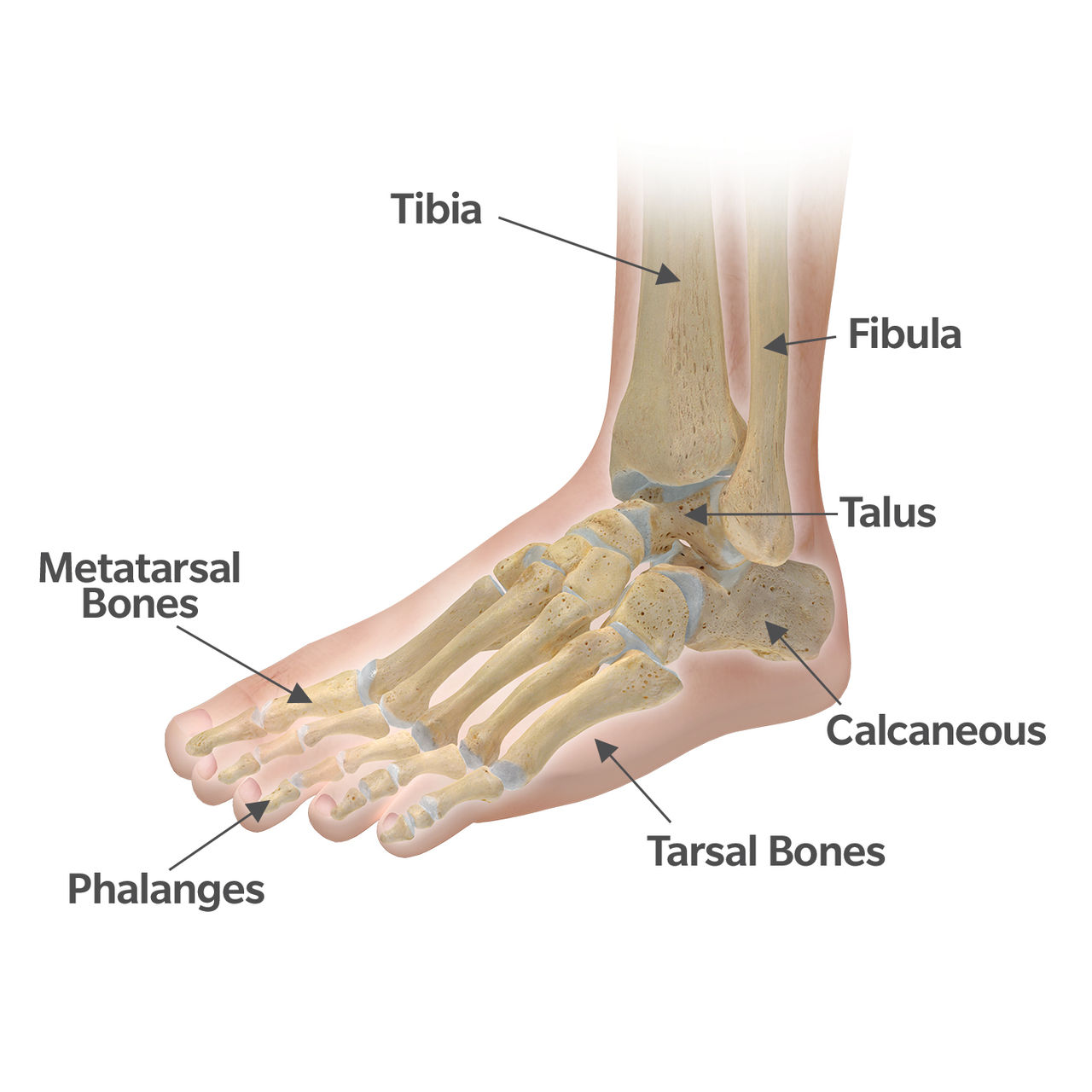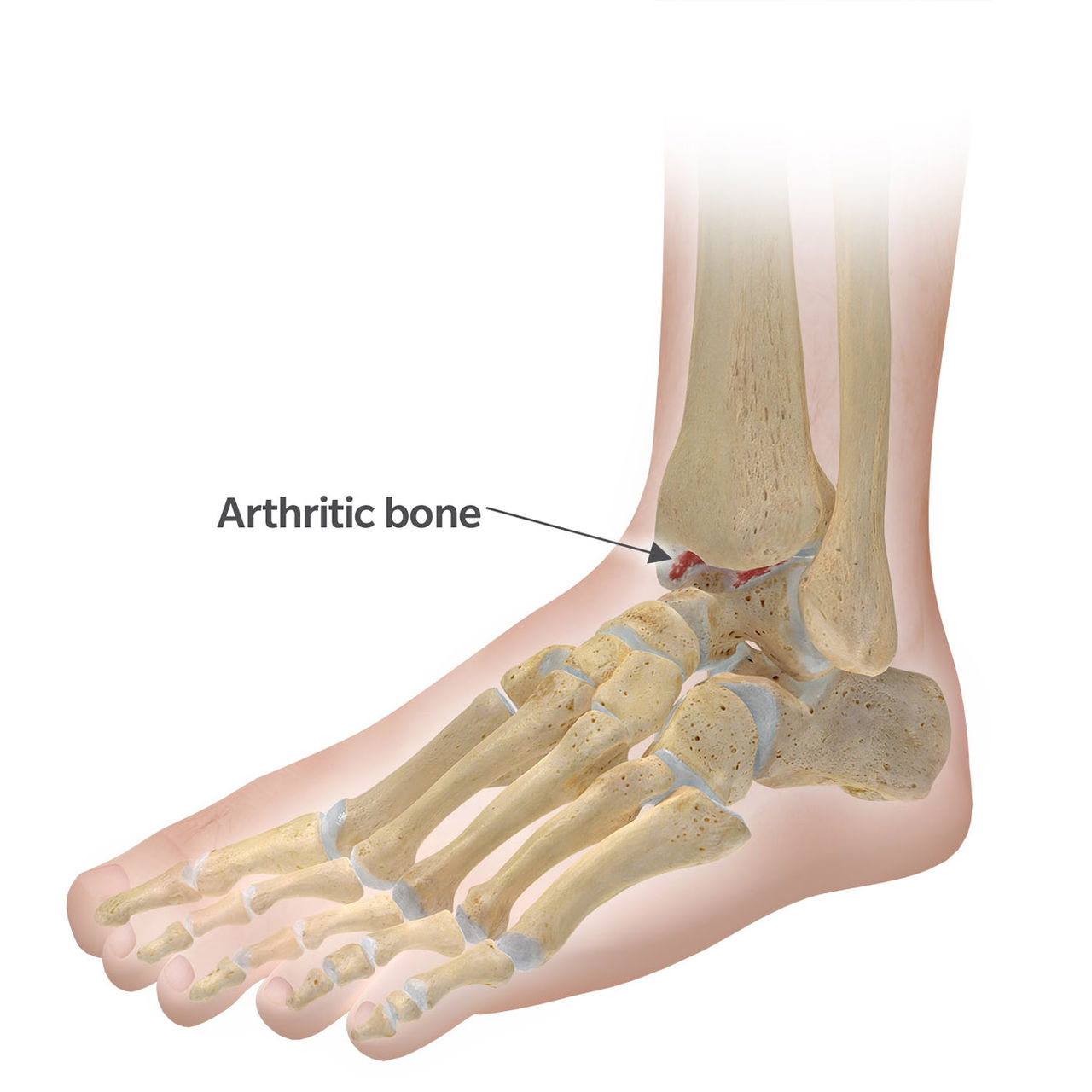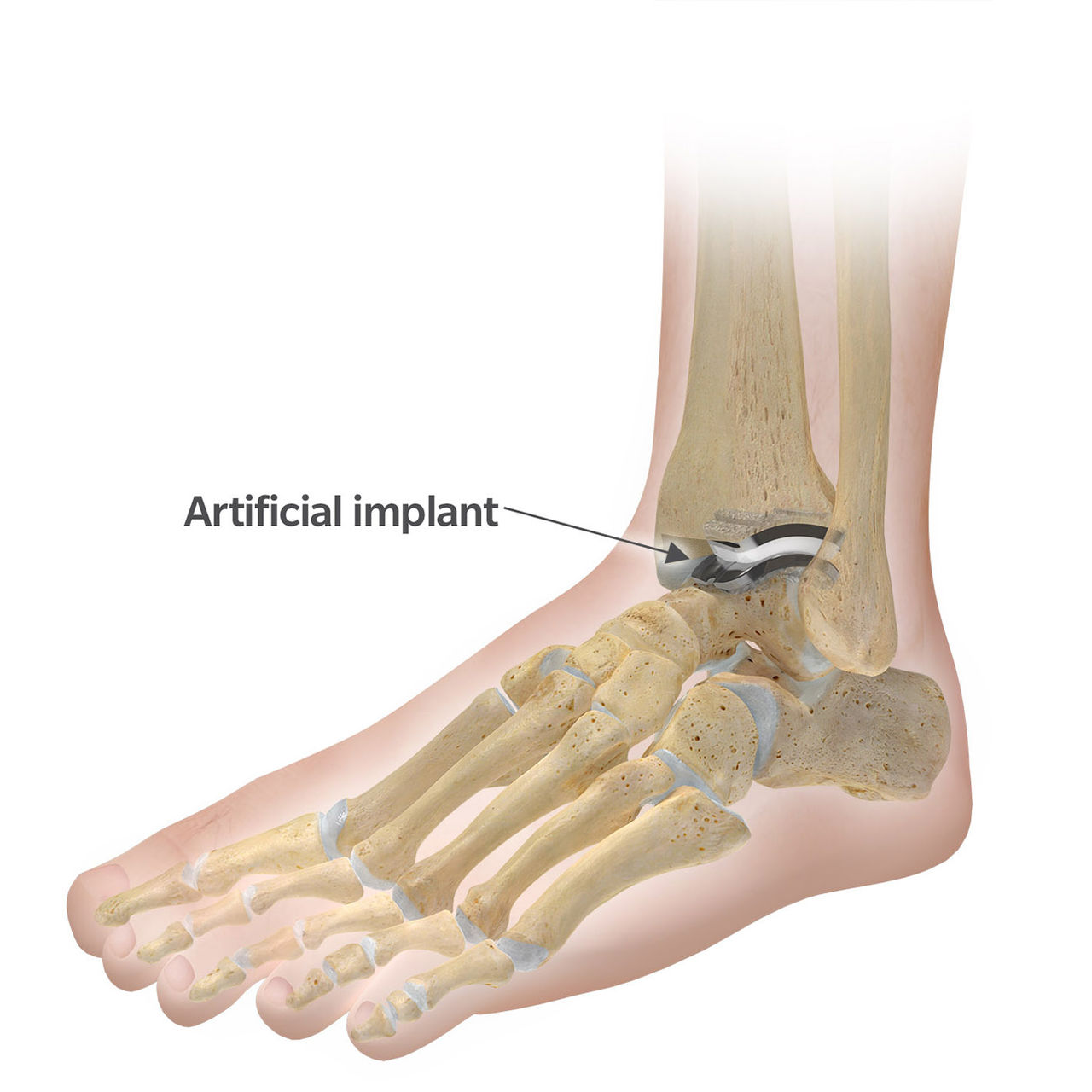7 Common Questions About Total Ankle Replacement
If you’re considering total ankle replacement surgery, you may have many questions. In this article, Dr. Sachs reviews 7 common questions he hears from his patients.
If you’re considering total ankle replacement surgery, you may have many questions. In this article, Dr. Sachs reviews 7 common questions he hears from his patients.
In general, the treatment for ankle arthritis is dependent upon the severity of symptoms and the degree of arthritis. Initially, if there is mild to moderate arthritis, the ankle can be treated non-surgically with anti-inflammatory medications, shoe inserts, bracing, physical therapy, and corticosteroid injections. These conservative treatment options can provide symptomatic relief of the arthritic pain.
However, if the symptoms are severe and the ankle arthritis continues to interfere with your daily activities, surgical treatments such as an ankle arthroscopy, ankle arthrodesis, or total ankle replacement may be an option. An arthroscopic debridement, or open spur excision of the ankle joint, may be possible if the arthritis is not severe. An ankle arthrodesis involves fusing or mending together the bones of the ankle joint. This will eliminate pain and motion of the joint. Another surgical option is a total ankle replacement, which uses implants to replace the ankle joint and maintain motion of the joint. Each treatment option has its own risks and benefits.
A total ankle replacement is a surgical procedure that is used to treat arthritis of the ankle joint. The ankle joint consists of the tibia, fibula, and talus bones. The talus bone connects the foot bones to the ankle bones including the tibia (shin bone) and fibula (bone on the outside of the lower leg).

The surgery involves removing the damaged bone and cartilage portion of the ankle and replacing the joint with metal implants and a medical-grade, plastic component. The bottom of the tibia and top of the talus are replaced in the surgery and the metal implants are the new artificial joint. The plastic component, made of polyethylene, is inserted between the metal implants.


The goals of the total ankle replacement are to relieve pain and maintain motion of the joint. Also, by maintaining motion of the ankle joint, there should not be any additional stress on the remaining foot joints or knee joint.
If you have ankle pain that interferes with your lifestyle and daily activities, you may be a candidate for a total ankle replacement. There are several factors and criteria that your surgeon will take into consideration when contemplating a total ankle replacement. First, the patient should have attempted conservative, nonsurgical treatment options as previously discussed. These treatment options should have proven ineffective to provide pain relief.
There are some fundamental indications to the total ankle replacement procedure. However, it’s important to point out that every situation is different and the medical history, physical demands and social requirements for each patient should be carefully evaluated. Your surgeon can determine if you are an ideal candidate for total ankle replacement surgery.
Complications can occur with any major surgery. For the most part, total ankle replacement is a successful procedure. However, there are risks associated to the surgery. Some of these risks include infection, loosening of the implant, failure of the bone to heal to the implant, fracture, wearing out of the components, arthritis in the surrounding joints, wound issues, nerve injury and blood clots.
Total ankle replacement is a complex surgery and may take several months to completely recover. There are multiple types of total ankle replacement designs that have been cleared by the FDA and the initial recovery period may vary slightly depending on the implant design. It’s imperative to plan for enough time for recovery to allow your body to heal properly.
Immediately following surgery, patients will typically be in a splint or protective walking boot for approximately 6 weeks. It usually takes 2 to 3 months before you are able to put full weight on the foot. On average, full recovery from surgery may take up to a year. Patients can usually return to normal activities at that time.
Physical therapy is an integral part of the recovery process following a total ankle replacement surgery. A certified physical therapist can guide you through the rehabilitation process and can help to improve the overall success of the surgery. A physical therapy program is designed to achieve several goals such as increasing strength and improving range of motion of the ankle joint. Physical therapy will also improve your balance and coordination, which will help you walk better following surgery. The amount of physical therapy will vary between patients and the type of surgery. With that said, physical therapy will last on average, 6 to 12 weeks.
After full recovery, patients can typically return to performing normal daily activities and low-demand exercise including walking, cycling, swimming, and golf. Generally, it is recommended to permanently avoid high-demand activities such as running and jumping. Your doctor should give you guidance regarding activities that are appropriate for you.